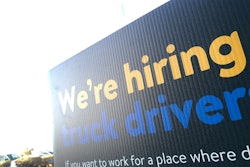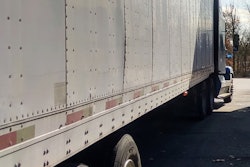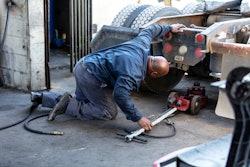CCJ parent Randall Reilly earlier this year, in partnership with Shell Lubricant Solutions, produced the 2022 State of Diesel Technicians report, a survey-based analysis of the current state of the diesel technician trade. Survey participants were current technicians across many industrial segments, including trucking and transportation. The survey itself reveals what technicians want most from prospective employers; why they change jobs; the kind of training methods currently used by their employers; and how much money they make; among many other insights.
It's one of the deepest dives you will find on this part of the labor force and it is available for download at no cost.
Contents of this video
00:00 Diesel technician shortage
02:02 Pay and benefits for diesel technicians
02:58 Recruiting diesel technicians
04:11 Women in the diesel technician field
05:41 Company culture
06:33 Employee turnover
Transcript
Jason Cannon
Stop in any Starbucks, any McDonald’s – just about any public-facing industry, really – and you’ll likely be struck with an issue that’s been lingering since early 2020 and doesn’t appear to be going away any time soon: a lack of labor force.
A shortage of truck drivers is nothing new. It was the top industry issue for five consecutive years, according to an annual list compiled by the American Transportation Research Institute. This year, when it was unseated from its top spot by the price of fuel, it didn’t fall far – settling at No. 2 overall, but it’s still the No. 1 issue for carriers that participated in the survey.
But truck driver isn’t the only trucking labor force under supply and demand pressure. A lack of qualified diesel technicians is just as severe and it’s just as important.
Last year, the diesel tech shortage cracked ATRI’s top industry concern list for the first time, coming in at number 10 overall and no. 7 among carriers. This year, it dropped to no. 15 overall and no. 8 among carriers – a byproduct of things like diesel fuel prices and speed limiters, for example – being more ‘right now’ problems, not that the issue of diesel tech labor has been solved in any way.
So what’s the issue?
For one, age. This is a problem that we’re seeing with the driver population, too. The average age of a diesel technician, according to Data USA, is just more than 40 years old – about a decade younger than the average age of a truck driver, but still a far cry from the age of a recent high school or tech school graduate.
According to the State of Diesel Technicians report, produced by CCJ parent company Randall Reilly and sponsored by Shell Lubricant Solutions, more than a quarter of respondents have been in diesel maintenance for 30 or more years. 48% of technician respondents have worked in the business for more than 20 years, while just 1% claim to have been in the business for 2 years or fewer – an alarming signal of a lack of a youth movement in heavy duty diesel technicians.
Kirk Altrichter, Kenan Advantage Group’s executive vice president of fleet services and a CCJ Career Leadership Award recipient, told me that this is a byproduct of entire generations of students being told they have to go to college to get a good job, and that’s simply not the case.
Angel Coker
According to the 2022 State of Diesel Technicians report, the top three factors in job selection are pay and benefits, location and opportunities for advancement.
The report shows the majority (17%) of employees in this role earn between $50,000 and $60,000 annually, followed by 16% who earn $100,000 or more (all in the construction industry) and 15% who earn $60,000 to $70,000.
On the benefits side, the report says 69% have the option for an IRA or 401(k) retirement plan. In terms of insurance, 83% have access to health, and 72% and 64% have access to dental and vision, respectively. Only 58% are offered life/accident/death and dismemberment insurance, and 57% have paid sick leave options, while 78% have paid holiday leave.
Tom Quimby
So, how do you crack into schools? How do you reach new, young prospective students?
Many fleets have opted to go around schools entirely and pluck kids right out of the classroom.
Sandra Jordan, director of career services at Lincoln Tech’s Nashville campus, told me that the demand for diesel technicians has her school competing for students alongside shops that will initially put untrained recruits into a development or apprenticeship program.
Apprenticeships have played an important role in the development of the trucking labor force for a long time in all aspects of the industry. The 2022 State of Diesel Technicians report found that 44% of diesel technicians came to the industry via apprenticeship. One percent of our respondents were actually a current apprentice.
Current training methods in shops vary. According to the 2022 State of Diesel Technicians report, 50% of respondents are sent to training events and/or receive instruction from trainers brought on-site; 40% receive training through OEM/supplier courses online; 37% are taught through company-wide training curriculum; 28% are encouraged to seek out their own training; and 11% said they have not undergone training in their current role.
Angel Coker
About 28,500 openings for diesel service technicians and mechanics are projected each year, on average, over the next decade – many of which are expected to result from the need to replace workers exiting the labor force, according to the Bureau of Labor Statistics.
How do fleets backfill that gap while also filling current openings and having resources available for future openings? There has to be a recruitment effort placed on people other than men.
Jim Mathis, president of WyoTech in Laramie, Wyoming, said he has seen women – though very few – in the diesel tech space ever since he began his career at the technical college in the 1970s, but the number of women entering the field is ticking up.
According to BLS data, 293,200 people were employed as bus and truck mechanics and diesel engine specialists (not including diesel techs in other industries) in 2021, but just over 1% of those were women. According to Women in Trucking Foundation, which offers scholarships for women seeking careers as diesel techs, women make up 3.7% of diesel techs.
Mathis said WyoTech currently has 30 to 35 women enrolled across its programs (automotive, collision refinishing and diesel), representing about 10% of its student population – the highest percentage of women WyoTech has ever had. Where the school in previous years has experienced a 1% to 2% increase in enrollment among women, it more recently has been experiencing a 5% to 7% increase, he said.
Tom Quimby
Overhauling the average age and gender make up of a diesel repair shop likely means fleets will have to reevaluate management philosophies. You can’t recruit new school employees with old school tactics.
Hal Wagner, New Village Institute’s Director of Career Services, told me that company culture is often a bigger consideration than pay when it comes to technicians’ decision to join one shop over another. That’s a priority a lot different than your veteran technicians.
The 2022 State of Diesel Technicians report, produced by Randall Reilly and sponsored by Shell Lubricant Solutions, showed that about 51% of respondents, which have 21 or more years in the business, ranked corporate culture fifth among factors most important when choosing a new job, behind pay, location, opportunities for advancement and scope of work.
Jason Cannon
About 67% of technicians respondents said that when looking for a job, they rely on word of mouth, so your company culture is always important regardless of the age of your applicant. Once word hits the street, you either suffer the consequences of high turnover or reap the rewards of low turnover.
The good news is the 2022 State of Diesel Technicians survey indicates a lot of fleets are getting this right.
More than 70% of respondents reported having had only one or two different maintenance/repair jobs in the last five years, indicating that diesel techs don’t have a lot of incentive to jump between jobs based on any given single factor.
All of this data and more is available as a free resource, courtesy of CCJ’s partnership with Shell Lubricant Solutions.
All you have to do is download it. We’ve included a download link below.












